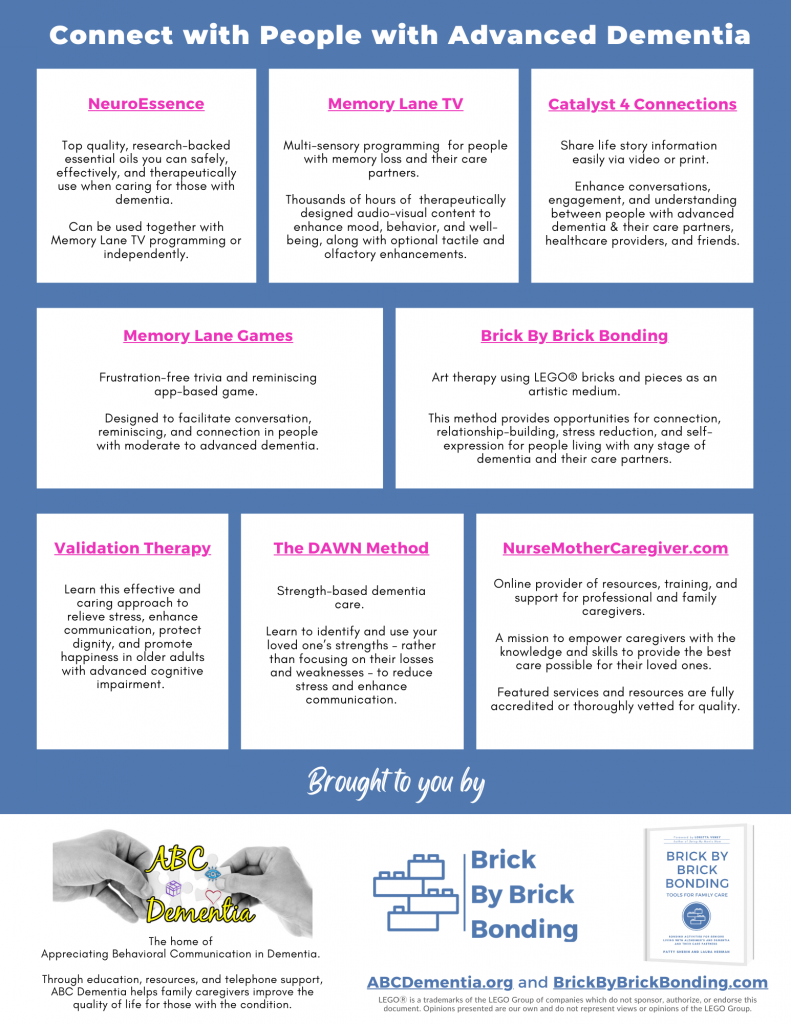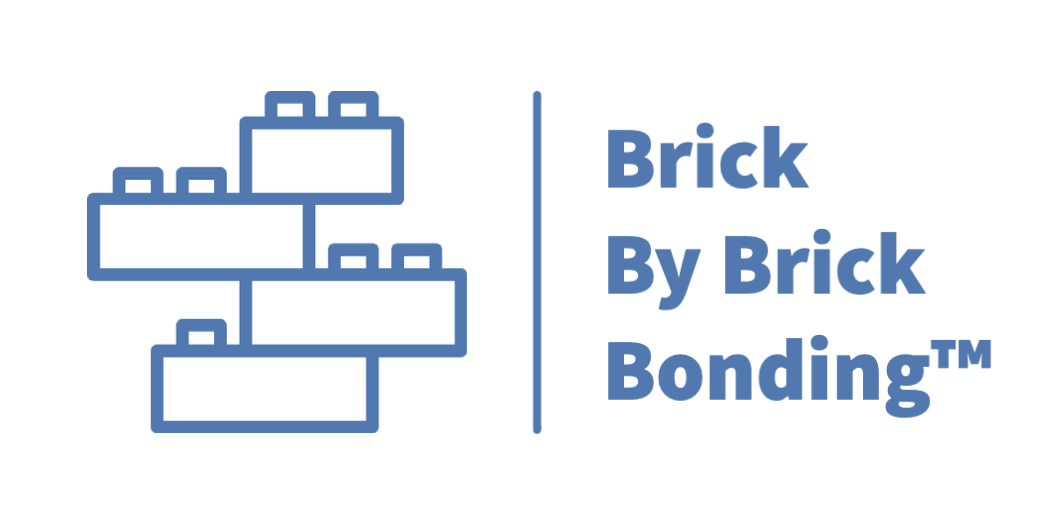Connect and Bond with People with Advanced Dementia
Connecting is key when it comes to caring for someone with advanced dementia. It’s not always easy, but the right resources can help.
Sign up for our email list and
receive a list of resources and valuable suggestions on
“How to Connect with a Person with Advanced Dementia” today!

Jessie’s Story: Catalysts 4 Connection is Born
When Jessie Brown moved her dad into memory care she wanted the staff to see the wonderful whole person he was – not just his diagnosis.
A celebrated pro baseball and football player, Tom had been an amazing father to Jessie and her six siblings. He was always looking for ways to help out and give back. When he retired from the NFL, he started Tom Brown’s Rookie League to create positive sports experiences for children. For 45 years he coached children in basketball, baseball, and football.
Jessie asked the memory care team how to get his life story information to the staff who would be caring for him. She filled their paperwork with details.
But the staff had many residents to look after, and new staff faces were a constant. It seemed most of them hadn’t seen Tom’s life story paperwork.
A care advisor had cautioned Jessie not to expect too much from the memory care staff. “No one will take care of your Dad the way you will,” she’d said. It made sense. But it was hard to tell what was a reasonable expectation.
Jessie spent a lot of time with Tom in his new home. She helped provide care and worked to bridge communication with staff.
One evening, after Jessie had left for the evening, her phone rang. Her father’s nurse, one of the best the facility had to offer, was on the line. Stress wavered in her voice.
“Jessie, would you talk to your dad? He’s getting agitated. He’s calling the other residents his kids. He’s trying to tell them what to do. Everyone’s getting frustrated.”
Jessie dialed her dad’s iPad and the nurse handed it to him.
“What’s going on, Dad?” Jessie asked.
Tom did his best to explain. It was hard for him to articulate what he was trying to do, but Jessie got it. Between the clues peppering his words and her familiarity with his past, it was clear. He was trying to organize a youth baseball game, as he had done year after year. Only this time the “kids” weren’t cooperating.
Jessie responded to Tom within his current reality. She validated his emotions and helped him feel he’d accomplished what he needed. His drive satisfied, Tom was able to settle down with a bowl of chocolate ice cream and some old Packers videos.
Jessie hung up the phone and sat in silence for a moment. This was a problem.
Tom’s years coaching youth sports were a huge part of his identity and what gave his life meaning. Yet even some of his best care staff at the facility didn’t know about it.
But Jessie knew problems had solutions. She’d spent years in special education innovating solutions for people with special needs. That led to using technology to solve problems for her father and other older adults.
She considered the pieces of the puzzle. The staff wasn’t using the written material she’d provided. Yet this information was vital to understanding Tom as a whole person. It was essential to understanding his behavior and ultimately meeting his needs. How could she get them this information in a more user-friendly format? How might technology help her do so?
The pieces fell into place like magic. Within a day or so she had developed a solution: her first Catalyst for Connection.
She created a short video that staff could easily watch on their cell phones. They’d be able to quickly learn many of the essentials about Tom’s life.
His playing and coaching career.
His family.
His favorite foods.
Easy ways to help him relax.
But would it work?
There was only one way to find out. Jessie posted a QR code linked to the video on her father’s bedroom door.
The staff loved it!
The video was engaging and easy to watch. Within two minutes they better understood who he was and how to help him feel better. And once they knew more about him, caring for Tom became easier.
When we understand the people we care for it allows us to interact in ways that promote cooperation. When we don’t, we tend to think of their behavior as “symptoms of dementia” that have no recourse. This can lead to resistance and frustration. It impacts their quality of care and eats away at their quality of life.
Jessie went on to pilot the Catalyst for Connections program in several organizations. The feedback has been overwhelming!
From family caregivers to memory care staff and other healthcare providers, everyone agrees. Points of connection make caring for people easier, more effective, and more pleasant.
Catalysts 4 Connection will be available for everyone in Summer 2023.
In the meantime, Tom continues to live well despite the advanced stage of his condition. His days are full of therapeutic sensory stimulation. He’s surrounded by people who know and care about him as a whole person. And it shows in his laid-back demeanor and easy-going attitude.
Jessie’s dedication and attention are key to how well her father fares. She’s quick to express her gratitude to the NFL. They’ve helped ensure her father has the resources he needs to live well.
Sign up to our email list to learn more about how to connect with a person with advanced dementia and other valuable suggestions and recommendations.
Why Does Connection Matter in Dementia Care?
Many of these resources are available to anyone who is aware of them. It’s essential to spread the word so other family caregivers can take advantage of them.

Humans are social creatures and connection is a fundamental human need. We’re hard-wired to crave connection and a sense of belonging. On the most basic levels, it’s vital for survival.
When we humans feel unconnected – whether or not we have dementia – we fail to thrive. We experience effects such as:
- Anxiety
- Depression
- Low-self esteem
- Anti-social behavior
- Aggression
When we have dementia and exhibit these types of emotions or behavior, people tend to write them off as symptoms of dementia that can’t be treated.
However when we address the underlying unmet need – the need for connection – we can help people feel and function much better, improving their mood and behavior.
Additionally, when we understand where a person is coming from we can better understand their behavior and respond therapeutically.
Closing Thoughts
Connecting is key when supporting someone with dementia. It makes all the difference in a person’s cooperation, mood, and behavior. The importance of connection for quality of care, and quality of life, can’t be overstated.
It can seem tough at first, but getting the hang of it doesn’t take too much beyond a sincere desire to do so. Take a little time to learn the basics, and then just practice. It’ll get easier over time.
Using available resources can also help a lot. The resources featured here were all developed by people who care about connecting with people with dementia, and understand how to do so. Please take advantage of them to ease your own experience and that of your caree.
Sign up below to receive “How to Connect with a Person with Advanced Dementia”
